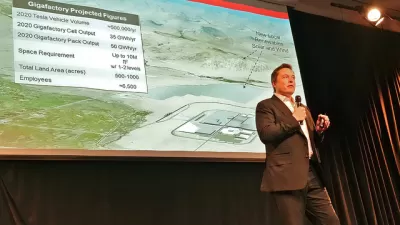A new report predicts how - and where - we'll be living in the near future, and where planners and developers should focus.
Writing in The Atlantic Cities, Chuck Wolfe analyzes one of the latest on-the-ground summaries of urban trends, a new report from the Urban Land Institute: "What's Next, Real Estate in the New Economy".
The report focuses on the relationships of demographic, financial, technological and environmental trends over the next decade. It explains how these trends are dramatically impacting urban planning, design and development practices, so much that "[t]he real estate world is hurtling into a different place and time."
The report's purposeful topic titles and subject areas outline how key aspects of "living, working and connecting" will change in major ways in North America, Asia and Europe, primarily shaped by the values, preferences and work ethic of Generation Y.
Wolfe concludes:
"'What's Next' is easily accessible and readable in one sitting, and projects the virtue of practicality, gleaned from a cross-section of ULI's ... members. For a glimpse into the realities faced by the report's intended audience, the report is well worth both review and reflection."
Thanks to Chuck Wolfe
FULL STORY: Resetting Urban Land Use: What's Next?

Study: Maui’s Plan to Convert Vacation Rentals to Long-Term Housing Could Cause Nearly $1 Billion Economic Loss
The plan would reduce visitor accommodation by 25,% resulting in 1,900 jobs lost.

North Texas Transit Leaders Tout Benefits of TOD for Growing Region
At a summit focused on transit-oriented development, policymakers discussed how North Texas’ expanded light rail system can serve as a tool for economic growth.

Why Should We Subsidize Public Transportation?
Many public transit agencies face financial stress due to rising costs, declining fare revenue, and declining subsidies. Transit advocates must provide a strong business case for increasing public transit funding.

How to Make US Trains Faster
Changes to boarding platforms and a switch to electric trains could improve U.S. passenger rail service without the added cost of high-speed rail.

Columbia’s Revitalized ‘Loop’ Is a Hub for Local Entrepreneurs
A focus on small businesses is helping a commercial corridor in Columbia, Missouri thrive.

Invasive Insect Threatens Minnesota’s Ash Forests
The Emerald Ash Borer is a rapidly spreading invasive pest threatening Minnesota’s ash trees, and homeowners are encouraged to plant diverse replacement species, avoid moving ash firewood, and monitor for signs of infestation.
Urban Design for Planners 1: Software Tools
This six-course series explores essential urban design concepts using open source software and equips planners with the tools they need to participate fully in the urban design process.
Planning for Universal Design
Learn the tools for implementing Universal Design in planning regulations.
City of Santa Clarita
Ascent Environmental
Institute for Housing and Urban Development Studies (IHS)
City of Grandview
Harvard GSD Executive Education
Toledo-Lucas County Plan Commissions
Salt Lake City
NYU Wagner Graduate School of Public Service




























